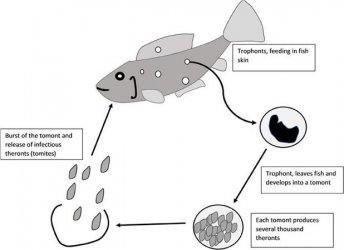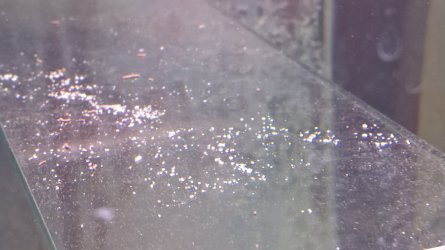would it help when using salt to treat fish by adding treatment for chloromines ect to the water first...???
I don't understand the sentence. Are you asking if we should be treating the tank with chloramine, or are you asking if we should be removing chloramine?
Any new water that gets added to an aquarium with fish and other aquatic life should be free of chlorine/ chloramine before it is added to the tank.
-------------------------
In freshwater, salt (sodium chloride) that is added at a high enough level will kill some types of bacteria, fungus & protozoans. It doesn't kill all species but it can kill large numbers of unwanted disease organisms if there is sufficient salt in the water. The reduction of these disease organisms can give the fish a chance to heal itself assuming the water is clean and the fish is in reasonable condition to begin with.
If the salt levels are too high you can kill plants and harm the fish. Fishes that naturally occur in pure freshwater are more prone to kidney damage caused by high levels of salt compared to fishes that occur in hard water or brackish water. This is due to the smaller kidney size of fishes found in pure fresh water vs fishes found in hard, brackish and sea water. There are other issues associated with high levels of salt being used on fishes from pure fresh water as well but the main damage is done to the kidneys.
-------------------------
Beneficial filter bacteria that has been in a filter for a couple of months will be living in a biofilm, which is like a thin layer of slime consisting of bacteria, yeast, viruses, fungus and all sorts of microscopic organisms. This biofilm acts as a barrier and protects the bacteria and other micro-organisms from external forces that might affect them. This includes salt and chlorine.
The beneficial bacteria living in an established aquarium filter can tolerate chlorine/ chloramine when being washed under tap water. That is to say, if you have an established filter and wash the filter material under tap water, some of the bacteria will survive. And there has been research done that shows most of the filter bacteria survives being washed under tap water where it is exposed to chlorine and chloramine in the water. This is due to the biofilm protecting them and also depends on how thoroughly the filter material is washed. A quick rinse might get rid of some gunk and the biofilm will remain largely intact. However, if you scrub the filter media and wash it repeatedly for an extended period of time (5 minutes or more), then you will remove most or all of the biofilm and the bacteria will be washed away with that. Some bacteria will remain on the filter media and might survive the chlorine/ chloramine in the water.
That doesn't mean we should be washing filter materials under tap water because prolonged exposure to the levels of chlorine or chloramine in tap water will eventually kill the filter bacteria. But the filter bacteria can tolerate the chlorine/ chloramine levels in the tap water for a couple of minutes.
When salt is added to an aquarium to treat fish diseases, the sodium & chloride levels in the water will be relatively low and don't affect the filter bacteria due to being low levels and due to the biofilm.
There are also numerous species of beneficial filter bacteria and some live in fresh water, others live in brackish water and more species live in sea water. Some of the fresh and brackish water species are highly adaptable and can tolerate lots of salt.
-------------------------
The reason I recommend salt for some diseases is because it is much safer for the fish and doesn't leave residual chemicals in their bodies. This is particularly important in aquaculture when growing food fishes for human consumption. There are strict requirements when it comes to treating commercially raised food fishes for the market and most common aquarium remedies are not allowed to be used.
Some medications like Malachite Green are readily found in normal fish medications and this substance is carcinogenic. Many chemicals used in fish medications get stored in the fish and build up in quantity. This can lead to animals/ people ingesting unknown quantities of potentially harmful and even dangerous chemicals if they eat these fish. Salt (sodium chloride) does not have any of these problems and is considered safe to use on fishes cultured for human consumption.




